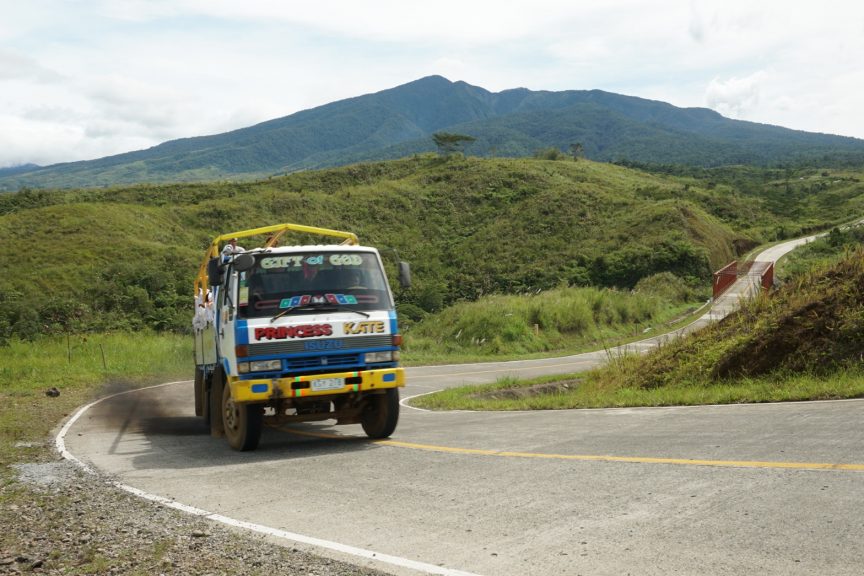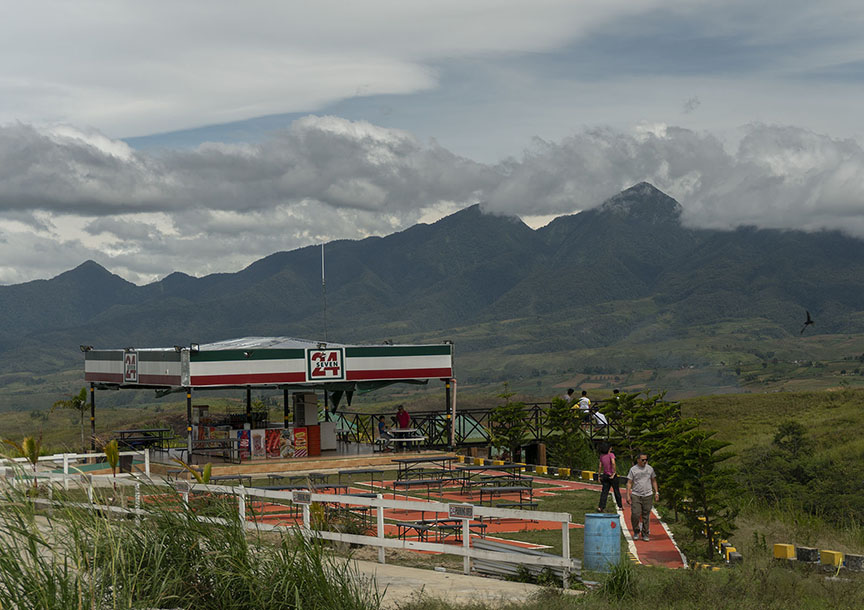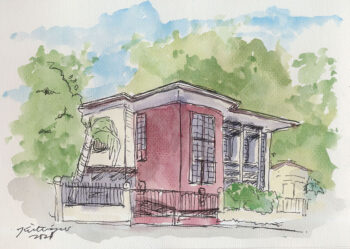MIARAYON, Talakag, Bukidnon (MindaNews/28 February) – Through the last fifty years of my life, I have traveled extensively across the breadth and length of Mindanao. Some places earlier could only be reached on foot or horses and later by habal-habal. If there were roads, only the logging trucks or those referred to as three-fourths could penetrate far-flung interior territories. One held one’s breath as these vehicles traversed cliffs and one-way muddy roads that could easily make the ride a trip to the after-life.
There are, of course, ugly sights as one travels these roads including bald mountain slopes, unkempt checkpoints and polluted rivers. However, most of the time one is gifted with the most delightful scenery and awesome sights. Beholding these wonderful views that Mother Nature has so generously offered the Mindanawons, one can only thank the heavens for the privilege of being in such moments of great beauty.

Just when I thought I had seen them all – having gone up to the mountain ranges across Mt. Apo and Mt. Malindang, across the Valleys of Kulaman in Sultan Kudarat and Maragusan, the coastal areas along the Davao Gulf to the marshland of Agusan Sur and the small islands surrounding Mindanao – another vista unfolded which convinced me that there is still so much that Mindanao can offer the weary traveler.
When the roads were still primitive and the surroundings were not so secure, Miarayon – located in the western plank of Bukidnon Province adjacent to Lanao del Norte – had very few visitors. For centuries, only the Lumads occupied this territory which lies between Mt. Kitanglad and Mt. Kalatungan. Slowly, migrant settlers began to move from central Bukidnon towards the town of Lantapan, Barangay Kibangay and ultimately, Miarayon. (Kibangay is in Lantapan and Miarayon is a barangay of Talakag municipality). From Malaybalay, the capital city of Bukidnon, it takes about an hour-and-a-half to travel to Miarayon. Fortunately, the road has been cemented thus making the trip very pleasant.
This journey is most enjoyable especially as the sun rises and nature sparkles or late in the afternoon when the fog starts to envelope the slopes of the mountains and the thinning sunlight caress the treetops. Along this road millions of sunflowers bloom where they are allowed to thrive with little human care. The trees range from the golden showers at the foot of the mountain range (which start to bloom in February and will hold on to the branches in full glorious yellow till the rains come in May) to the pine trees at higher levels.
Name a cash crop – whether corn, pineapple, banana, rubber, sugar cane and falcatta – these are all grown on the rich fertile soils of this land. And in Kibangay and Miarayon, the vegetable patches are everywhere on the limited plains, by the side of hills and on mountaintops. Along the road one can see green fields planted to cabbages, broccoli, pechay, parsley, lettuce, eggplants and other vegetables. Even outside the rainy season, the vegetable patches thrive owing to the cold weather in the uplands. During bountiful harvest time, so many are just discarded and left to rot under the sun. Farmers will willingly give to the passersby those that cannot anymore be transported to the markets.
While on first glance, this scene of bountiful vegetable harvest gladdens the heart, eventually there are shadows that needs to be confronted if the farmers – mostly Lumad – are well-rewarded for their hard labor. As we all know, vegetables are some of the most perishable agricultural products in the market. Their shelf lives last only a short time. These need to be transported to the markets as soon as possible. Considering the government’s neglect of our peasants – with a Department of Agriculture that remains inept and inefficient – it is almost an impossibility that State assistance for cold storage that would lengthen the freshness of the vegetables would ever reach places like Miarayon.

As extended vegetable cultivation has taken its toll in terms of the soil’s fertility, practically all the farmers now use fertilizers and chemicals. Toxic agricultural practices sustain the production of these veggies whose markets go all the way to Cagayan de Oro City in the north and Davao City in the south. When typhoons cut off the Cordilleras from Manila, vegetables from Bukidnon find their way to the metropolis. The demand will continue to grow; thus the farmers in Kibangay and Miarayon will have no choice but rely on the toxic products. If a farmer engages in organic farming even as his farm is surrounded by farmers who do not, he will surely see his farm attacked by the multitude of insects.
The cement road that has connected Miarayon to the national highway that traverses across Bukidnon is now being extended towards Iligan City. Already there are those who brave the trip from Malaybalay to Iligan as there are just a few kilometers unpaved. Soon it will be cemented all the way which means the travel time from Davao City to Iligan City will be a lot shorter, since vehicles need not anymore pass through Cagayan de Oro City. For the moment however, there are no public utility vehicles that travel this route; only private vehicles can pass through this road. But as a four-lane road is being constructed, soon buses will be available for the paying public.
Once that happens, it would be like travelling from Davao City to Cagayan de Oro City via the BUDA road where the sojourner has a chance to travel across rivers and mountains and passing through hills with pine trees and quaint little towns where small houses are surrounded with flowers that only bloom in cold climate. For the road to Miarayon provides one of those magical rides where one can just sit back and enjoy the unfolding of nature’s beauty.
[Redemptorist Brother Karl Gaspar is a professor teaching at St. Alphonsus Theological and Mission Institute (SATMI) in Davao City and a professor of Anthropology at the Ateneo de Davao University. Gaspar is author of several books, including “Desperately Seeking God’s Saving Action: Yolanda Survivors’ Hope Beyond Heartbreaking Lamentations,” two books on Davao history launched in December 2015, and “Ordinary Lives, Lived Extraordinarily – Mindanawon Profiles” launched in February 2019. He writes two columns for MindaNews, one in English (A Sojourner’s Views) and the other in Binisaya (Panaw-Lantaw).]







